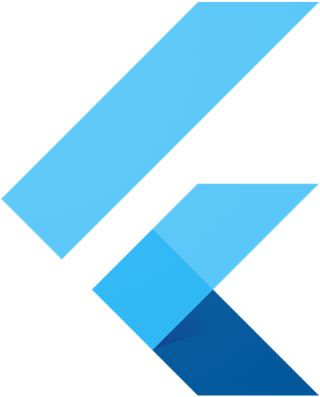Life of a Flutter Frame
Flutter apps work by transforming the widget tree in an application to a render tree that describes how to graphically render the widgets onscreen, and animating in response to input events or the passage of time. We refer to a single still image within the sequence of images composing an animation as a frame, similar to a frame in a movie filmstrip. In the context of a complete Flutter application these are rendered into a FlutterView class which is typically an instance of a platform-specific view class like SurfaceView on Android, UIView on iOS, HWND on Windows, NSView on macOS, or GtkBox on Linux.
This page attempts to describe the life of a Flutter frame in the engine from initial trigger to rasterization, presentation, and finally destruction/recycling. For an overview of the Framework side of this process, see the Flutter's Rendering Pipeline tech talk.
All frames are born with a call to RequestFrame in the Animator.
A frame may be requested for a variety of reasons, ranging from resizing the Flutter view, to lifecycle events like backgrounding or foregrounding an app, to requests from either the app (via dart:ui's PlatformDispatcher.scheduleFrame) or the embedder (via the embedder API's FlutterEngineScheduleFrame).
Flutter does some minimal housekeeping when a frame is requested, primarily to ignore any duplicate requests to schedule a frame before the frame is actually produced.
Once a frame is scheduled, Flutter waits for a vsync from the operating system to proceed.
At the heart of Flutter's graphics workflow is the frame pipeline. The pipeline is responsible for coordinating work between the UI thread, where the application code runs, and the Raster thread, where rasterization and compositing is performed. See the threading section of the Engine Architecture wiki for more details on threading in the engine.
When a vsync occurs, Flutter begins the work of producing the frame in Animator's aptly-named BeginFrame. At this point, the animator reserves a spot in the pipeline and notifies the framework to begin the process of producing a frame by triggering the PlatformDispatcher.onBeginFrame dart:ui callback.
When using the engine with the Flutter framework, onBeginFrame is handled by handleBeginFrame in the framework, whose job it is to kick off the production of a Scene in the framework. A good overview of this process can be found in the documentation of RendererBinding.drawFrame and the Flutter's Rendering Pipeline tech talk. This process ultimately culminates in the production of a Scene which is handed back to the engine through a call to FlutterView.render.
On the engine side, a Scene is represented as a LayerTree. Calling FlutterView.render hands the layer tree to the Animator via a call its Render method, which posts the layer tree to the pipeline and notifies the Rasterizer that it's time to start rasterizing the frame.
Rasterization is the process of converting the in-memory layer tree into pixels on a surface. Rasterization-related code in Flutter is executed on the Raster thread, which coordinates with the GPU. On some platforms, the Raster thread and the Platform thread may be the same thread.
Rasterization starts with a call to the Draw method in the Rasterizer. At this point, the recently-produced LayerTree is pulled from the pipeline. The rasterizer does a quick check to see whether the app is running in headless mode (e.g. backgrounded) and if so, the frame is discarded; otherwise, rasterization proceeds.
Rasterization begins with a request for a surface to which the GPU can draw via a call to the AcquireFrame method of Surface. This delegates platform-specific code implemented in each embedder in response to callbacks configured in FlutterRendererConfig which acquires an appropriate Metal, OpenGL, Vulkan, or software surface for use by the rasterizer.
Once a surface is acquired, the LayerTree is rasterized to the surface via recursive Preroll and Paint calls through the layers. Behavior of these calls is specific to each layer type, but in the end, generally resolves to drawing via either either Skia or Impeller. Once the layer tree has been walked and all graphics operations have been collected, the frame is submitted to the GPU, and embedders are provided a callback to perform further platform-specific handling on their part -- typically presenting the surface via the platform-specific view implementation.
The above process is repeated until the pipeline is empty.
TODO(cbracken): write this up using this patch as a reminder.
- Home of the Wiki
- Roadmap
- API Reference (stable)
- API Reference (main)
- Glossary
- Contributor Guide
- Chat on Discord
- Design documents
- Code of Conduct
- Issue triage reports (latest)
- Our Values
- Tree hygiene
- Issue hygiene and Triage
- Style guide for Flutter repo
- Project teams
- Contributor access
- What should I work on?
- Popular issues
- Running and writing tests
- Release process
- Flutter Framework Gardener Rotation
- Rolling Dart
- Manual Engine Roll with Breaking Commits
- Updating Material Design Fonts & Icons
- Postmortems and Retrospectives
- Hotfix Documentation Best Practices
- In case of emergency
- Landing Changes With Autosubmit
- Setting up the Framework development environment
- The Framework architecture
- API Docs code block generation
- Running examples
- Using the Dart analyzer
- The flutter run variants
- Test coverage for package:flutter
- Writing a golden-file test for package:flutter
- Managing template image assets
- Setting up the Engine development environment
- Compiling the engine
- Debugging the engine
- Using Sanitizers with the Flutter Engine
- Testing the engine
- The Engine architecture
- Flutter's modes
- Crashes
- more...
- Setting up the Packages development environment
- Plugins and Packages repository structure
- Contributing to Plugins and Packages
- Understanding Packages tests
- Plugin Tests
- Releasing a Plugin or Package
- more...
